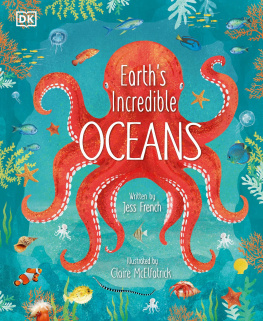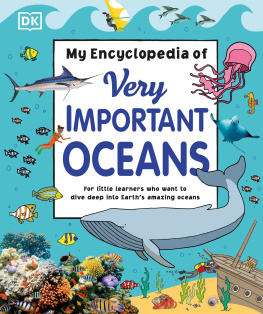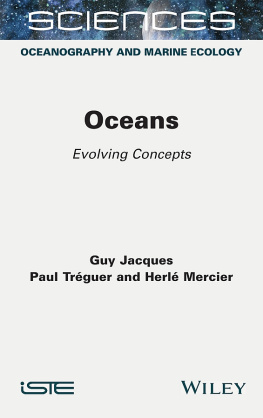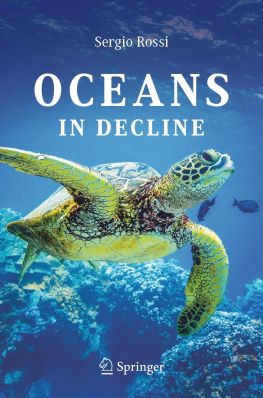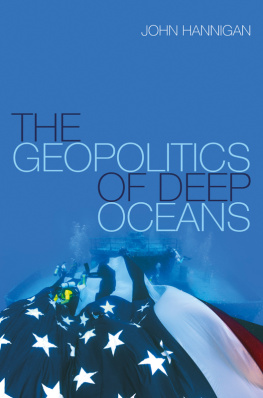Josh Young - Expedition Deep Ocean: The First Descent to the Bottom of All Five Oceans
Here you can read online Josh Young - Expedition Deep Ocean: The First Descent to the Bottom of All Five Oceans full text of the book (entire story) in english for free. Download pdf and epub, get meaning, cover and reviews about this ebook. year: 2020, publisher: Pegasus Books, genre: Detective and thriller. Description of the work, (preface) as well as reviews are available. Best literature library LitArk.com created for fans of good reading and offers a wide selection of genres:
Romance novel
Science fiction
Adventure
Detective
Science
History
Home and family
Prose
Art
Politics
Computer
Non-fiction
Religion
Business
Children
Humor
Choose a favorite category and find really read worthwhile books. Enjoy immersion in the world of imagination, feel the emotions of the characters or learn something new for yourself, make an fascinating discovery.

- Book:Expedition Deep Ocean: The First Descent to the Bottom of All Five Oceans
- Author:
- Publisher:Pegasus Books
- Genre:
- Year:2020
- Rating:3 / 5
- Favourites:Add to favourites
- Your mark:
- 60
- 1
- 2
- 3
- 4
- 5
Expedition Deep Ocean: The First Descent to the Bottom of All Five Oceans: summary, description and annotation
We offer to read an annotation, description, summary or preface (depends on what the author of the book "Expedition Deep Ocean: The First Descent to the Bottom of All Five Oceans" wrote himself). If you haven't found the necessary information about the book — write in the comments, we will try to find it.
Josh Young: author's other books
Who wrote Expedition Deep Ocean: The First Descent to the Bottom of All Five Oceans? Find out the surname, the name of the author of the book and a list of all author's works by series.
Expedition Deep Ocean: The First Descent to the Bottom of All Five Oceans — read online for free the complete book (whole text) full work
Below is the text of the book, divided by pages. System saving the place of the last page read, allows you to conveniently read the book "Expedition Deep Ocean: The First Descent to the Bottom of All Five Oceans" online for free, without having to search again every time where you left off. Put a bookmark, and you can go to the page where you finished reading at any time.
Font size:
Interval:
Bookmark:


For Samuel Macy Harrell III
and
In memory of Sally Bowers Harrell
with eternal gratitude
Knowledge of the oceans is more than a matter of curiosity. Our very survival may hinge upon it.
President John F. Kennedy, March 1961
S pace, that final frontier, has long been the ultimate in exploration. In the early 1960s, a space race between the United States and the Soviet Union shifted into high gear. Space travel captured imaginations around the world. Sending humans into the heavens in a rocket and allowing them to look back at Earth was a romantic notion. And then there was the burning question of whether or not there was any life on the Moon.
Three major space programs funded by the U.S. Congress were launched by NASA with varying goals and results. Project Mercury, which began in 1958, was the first human spaceflight program administered by NASA. The programs goal was to put an astronaut into orbit around the Earth. With millions following the developments on radio, that goal was achieved by John Glenn on February 20, 1962, and he became a modern-day hero.
Project Gemini, which ran from 1961 through 1966, took the next step toward landing a man on the Moon. In a capsule built for two astronauts, the Gemini spacecraft flew low orbit missions that were working to perfect Mercurys orbital techniques and prove the feasibility of in-orbit docking, necessary to complete a Moon landing. But the human cost was high, as three astronauts lost their lives during Gemini training. Adding the loss of life to the financial cost, a vigorous debate began over whether space travel was actually necessary or more of a quixotic pursuit.
NASA pushed ahead. The Apollo program was the final step in landing a man on the Moon. The spaceflight program, through many travails and the loss of yet three more lives in Apollo 1, achieved its goal. On July 20, 1969, with the world at a virtual standstill as hundreds of millions watched on television, Neil Armstrong and Buzz Aldrin landed Apollo 11s lunar module, the Eagle, on the Moon. Later that day, Armstrong became the first human to walk on the lunar surface.
Each of the space exploration programs built on the previous one, and one could not have been possible without its predecessor. To reach the Moon through these three monumental programs, which adjusted for inflation cost more than $175 billion, there were incremental steps toward the completion of the full mission. The spacecraft had to launch, dock in orbit, and the astronauts had to then land the Eagle on the surface of the Moon. Finally, the astronauts needed to return safely to Earth. For all the money, engineering know-how, and technology, the core mission of the programs was fairly straightforward: to safely land a man on the Moon, take a soil sample, and return it to Earth for further study.
As a result of the space race and the continuing fascination with the Moon, 533 people have orbited Earth, and 12 have walked on the Moon. As a species collectively, including the Soviet Unions early missions, weve gone up into space with great success. But what about going down to the bottom of our oceans? What has come of the oceans race?
The answer is next to nothing, because there isnt really one.
Oceans cover some 70 percent of the planets surface, driving weather, regulating temperature, and ultimately supporting all living organisms; and oceans have also been a vital source of sustenance, transport, commerce, growth, and inspiration, yet humans have explored only 20 percent of this virtual lifeblood. Most people struggle to even name all five of the oceans on our planet. Nothing has been more taken for grantedand more fearedthan the deepest waters of the world.
The best known oceans, certainly to Americans, are the two that border the continental United States, the Atlantic Ocean to the east and the Pacific Ocean to the west. The largest and deepest ocean of them all, the Pacific Ocean covers some 63 million square miles and touches more than 40 countries and 23 additional territories, stretching across the curves of the globe from the United States to Australia to Thailand.
Further north and east of the Atlantic, past Greenland and continuing to the northern tip of Russia, is the Arctic Ocean, generally identified because of its relationship to the Arctic Circle and renowned for its cold waters and polar ice caps. The Indian Ocean stretches from Asia at the north, to Africa on the west and Australia on the east, and skirts Antarctica to the south. Its warmer temperature cannot support as much sea life as the other oceans.
The most difficult one to name, for most, is the lesser traveled Southern Ocean, which wraps around Antarctica and is usually defined as all the water south of 60 degrees south latitudeknown by mariners as the screaming sixties because of its common, and ferocious, storms. Its the place of nature documentaries that feature the seals and whales of the Antarctic coastline and the penguins inhabiting the remote South Sandwich Islands far to the east of South America.
Despite the vital connection between the oceans and mankind, as of the turn of the calendar to 2018, only three people on two separate missions had been to the bottom of the Mariana Trench in the Pacific Ocean. Named the Challenger Deep, it has long been believed to be the deepest point of our five oceans at somewhere close to 10,916 meters, which is more than 35,000 feet, or roughly 6.7 miles.
The first mission to accomplish the dive was the U.S. Navys Project Nekton on January 23, 1960, something of an oceanic Mercury mission with the goal being to reach the bottom. The submersible Trieste was piloted by Swiss engineer Jacques Piccard and U.S. Navy lieutenant Don Walsh, Triestes commander. It proved with brute force that a massive steel sphere, made buoyant by huge tanks that were filled with gasoline that was lighter than water, could reach the bottom of the Challenger Deep.
The second mission occurred on March 26, 2012, when filmmaker James Cameron piloted his single-person, steel-capsuled Deepsea Challenger submersible to the bottom. His mission took the next step and showed that not only could we reach the bottom in a manned submersible, but we could take the next step and remain there and explore for hours, making it the Gemini version of deep ocean exploration that built on what the Trieste had accomplished.
Those two missions were more than a half-century apart, a stunning commentary on the lack of curiosity about the deepest point on our planet. And no one had even attempted to reach the bottom of the other four oceans, and therefore no one knows what, if anything, of meaning might be there. The fact is that scientists dont fundamentally understand how the oceans interact with the atmosphere or even each other, because we dont have much reliable dataperhaps because 90 percent lies below 1,000 meters. Below 1,000 meters, the water pressure is over 1,400 pounds per square inch and marine engineers say that at that point, things get really complicated. This depth is also generally referred to as the crush depth of most modern military submarines, and any craft capable of going below that depth requires special engineering, construction, and testing.
In 2018, a group set out to build a new machine that could go not just beyond 1,000 meters, but to 11,000, andfinallydive to the bottom of all the worlds oceans, a hoped-for Apollo-like deep ocean mission. To accomplish this, a 46,000-nautical-mile expedition, wrapping around the globe and then some, was set in motion and financed by a ponytailed Texan with a penchant for exploration that had led him to the peak of the highest mountain on each of our seven continents and to ski both poles, completing the so-called Explorers Grand Slam.
Font size:
Interval:
Bookmark:
Similar books «Expedition Deep Ocean: The First Descent to the Bottom of All Five Oceans»
Look at similar books to Expedition Deep Ocean: The First Descent to the Bottom of All Five Oceans. We have selected literature similar in name and meaning in the hope of providing readers with more options to find new, interesting, not yet read works.
Discussion, reviews of the book Expedition Deep Ocean: The First Descent to the Bottom of All Five Oceans and just readers' own opinions. Leave your comments, write what you think about the work, its meaning or the main characters. Specify what exactly you liked and what you didn't like, and why you think so.





